Detroit Diesel Engine 50 Service Manual
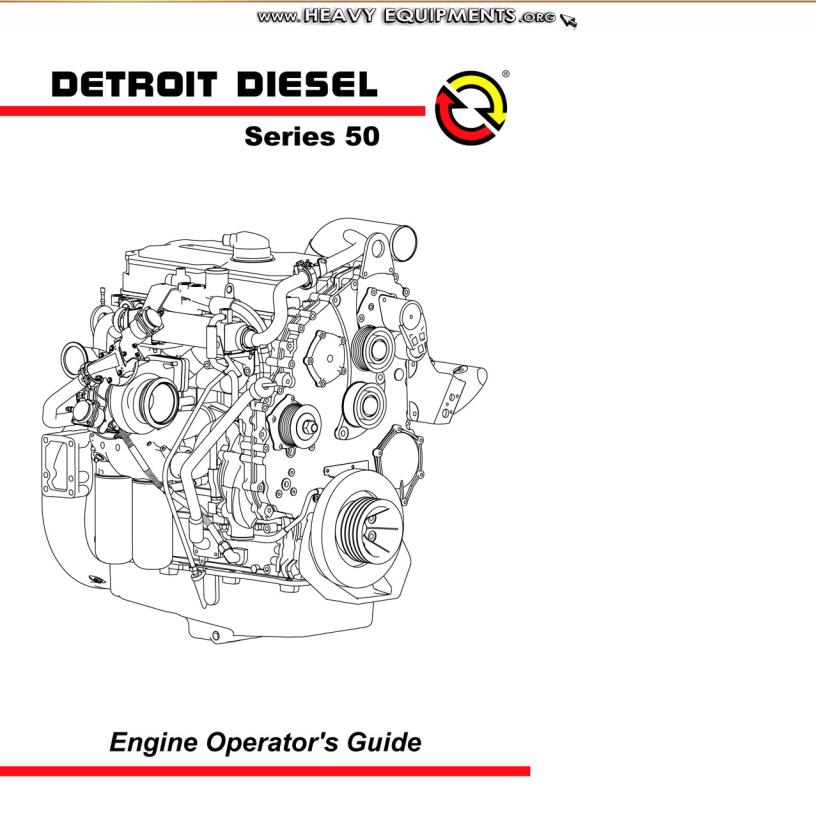
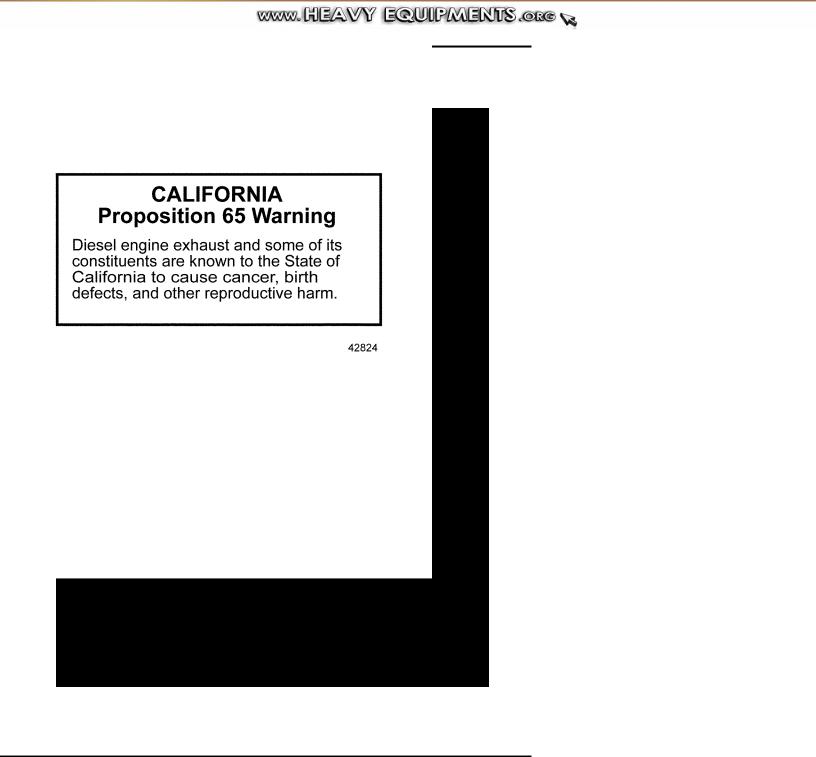

SERIES 50 OPERATOR'S GUIDE
To the Operator
This guide contains instructions on the safe operation and preventive maintenance of your Detroit Diesel Series 50® engine used in vehicle, stationary, construction/industrial, agricultural, generator set or fire fighting apparatus applications. Maintenance instructions cover routine engine services such as lube oil and filter changes in enough detail to permit self-servicing, if desired.
The operator should become familiar with the contents of this guide before operating the engine or carrying out maintenance procedures.
Power-driven equipment is only as safe as the person operating the controls. You are urged, as the
operator of this diesel engine, to keep fingers and clothing away from the revolving belts, drive shafts, pulleys, etc. on the engine installation.
Throughout this guide CAUTIONS regarding personal safety and NOTICES regarding engine performance or service life will appear. To avoid personal injury and ensure long engine service life, always heed these instructions.
Whenever possible, it will benefit you to rely on an authorized Detroit Diesel service outlet for all your service needs from maintenance to major parts replacement. Authorized service outlets worldwide stock factory-original parts and have
the specialized equipment and experienced, trained personnel to provide prompt preventive maintenance and skilled engine repairs.
The information and specifications in this publication are based on the information in effect at the time of approval for printing. Contact an authorized Detroit Diesel service outlet for information on the latest revision. The right is reserved to make changes at any time without obligation.
All information subject to change without notice. (Rev. 01/ 04) |
i |
6SE550 0401 Copyright © 2004 DETROIT DIESEL CORPORATION

NOTICE:
Failure to check and maintain SCA (supplemental coolant additive) levels at required concentrations will result in severe damage (corrosion) to the engine cooling system and related components.Coolant must be inhibited with the recommended SCAs listed in this engine operator's guide.Refer to section How to Select Coolant. In addition, the engine can be equipped with a coolant filter/inhibitor system as an installed option or as an after-sale item.
WARRANTY
The limited warranties for each engine application are covered in the Limited Warranty pages of this guide and in the booklet, “Warranty Information for Series 50 Engines,” available from authorized Detroit Diesel service outlets.
Keep this Operator's Guide with the engine installation at all times. It contains important
operating, maintenance, and safety instructions.
Trademark Information
Detroit Diesel®, DDC®, DDEC®, Series 50®, Optimized Idle®, ProManager®, reliabilt®, Power Trac®, Power Cool®, and Power Guard® are registered trademarks of Detroit Diesel Corporation. Delco Remy® is a registered trademark of Delco Remy America, Inc. Bosch® is a registered trademark of Robert Bosch Company N.A. Fuel Pro®, Sea Pro® and Mega Filter® are registered trademarks of Davco Manufacturing, L.L.C. The PowerBand® is a registered trademark of Gates Rubber Company. Tectyl® is a registered trademark of Daubert Chemical Company, Inc. Biobor® is a registered trademark of United States Borax and Chemical Corporation. DuPont® is a registered trademark of E.I. DuPont de Nemours and Company, Inc. All other trademarks used are the property of their respective owners.
ii |
All information subject to change without notice. (Rev. 01/ 04) |
6SE550 |
0401 Copyright © 2004 DETROIT DIESEL CORPORATION |

SERIES 50 OPERATOR'S GUIDE
TABLE OF CONTENTS
INTRODUCTION .................................................................................. |
1 |
NON-GENUINE AND REBUILT COMPONENT QUALITY ALERT .. |
1 |
CAUTION SUMMARY .......................................................................... |
3 |
ENGINE OPERATION ...................................................................... |
3 |
PREVENTIVE MAINTENANCE ....................................................... |
4 |
ELECTRICAL SYSTEM ................................................................... |
7 |
COOLING SYSTEM ......................................................................... |
8 |
AIR INTAKE SYSTEM ...................................................................... |
8 |
FUEL SYSTEM ................................................................................ |
9 |
STARTING AIDS .............................................................................. |
10 |
COMPRESSED AIR ......................................................................... |
11 |
LUBRICATING OIL AND FILTERS ................................................... |
11 |
ENGINE MODEL AND SERIAL NUMBER DESIGNATION ................ |
12 |
OPTION LABELS ............................................................................. |
13 |
CERTIFICATION LABELS ............................................................... |
14 |
OPERATING INSTRUCTIONS FOR A FIRST TIME START .............. |
15 |
PREPARATIONS FOR STARTING THE ENGINE THE FIRST |
|
TIME ................................................................................................. |
15 |
COOLING SYSTEM CHECKS .................................................... |
15 |
LUBRICATION SYSTEM CHECKS ............................................. |
16 |
EXTENDED STORAGE ........................................................... |
16 |
FUEL SYSTEM CHECKS ............................................................ |
17 |
OTHER CHECKS ........................................................................ |
18 |
STARTING THE ENGINE ................................................................ |
18 |
INITIAL ENGINE START .............................................................. |
19 |
ELECTRIC STARTER ............................................................. |
19 |
AIR STARTER ......................................................................... |
20 |
RUNNING THE ENGINE ................................................................. |
20 |
OIL PRESSURE .......................................................................... |
20 |
WARM-UP ................................................................................... |
20 |
INSPECTION ............................................................................... |
20 |
AVOID UNNECESSARY IDLING ................................................. |
21 |
All information subject to change without notice. (Rev. 01/ 04) |
iii |
6SE550 0401 Copyright © 2004 DETROIT DIESEL CORPORATION |
|
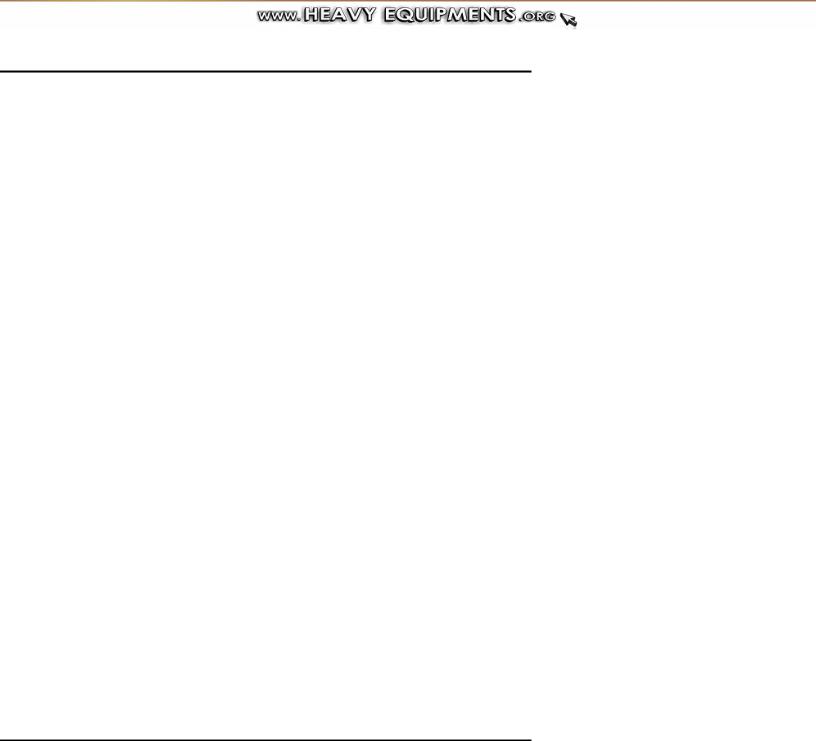
TABLE OF CONTENTS |
|
|
STOPPING THE ENGINE ................................................................ |
21 |
|
EMERGENCY JUMP STARTING .................................................... |
22 |
|
DDEC IV SYSTEM ............................................................................... |
|
23 |
DDEC SYSTEM .............................................................................. |
|
23 |
ENGINE PROTECTION ............................................................... |
24 |
|
IDLE SHUTDOWN TIMER ........................................................... |
24 |
|
CRUISE CONTROL ..................................................................... |
|
24 |
ENGINE BRAKES ....................................................................... |
|
26 |
DATA RECORDING CAPABILITY ................................................ |
27 |
|
DDEC IV OPERATION ..................................................................... |
|
27 |
IMMEDIATE SPEED REDUCTION OPTION ............................... |
28 |
|
STOP ENGINE LIGHT ................................................................. |
28 |
|
DIAGNOSTIC DATA READER ..................................................... |
28 |
|
DIAGNOSTIC CODE LIST ........................................................... |
30 |
|
DDEC IV ENGINE DRIVING TIPS ....................................................... |
37 |
|
ACCELERATING THE VEHICLE ..................................................... |
37 |
|
CRUISE CONTROL ......................................................................... |
|
37 |
ENGINE BRAKES AND CRUISE CONTROL .................................. |
39 |
|
SHIFTING ........................................................................................ |
|
39 |
IDLING ............................................................................................. |
|
40 |
WINTER FRONTS ....................................................................... |
|
40 |
ENGINE BRAKE SYSTEM .................................................................. |
41 |
|
DRIVER CONTROL SWITCHES ..................................................... |
41 |
|
LOW/HIGH SWITCH .................................................................... |
|
41 |
LOW/MED/HIGH SWITCH ........................................................... |
41 |
|
CLUTCH PEDAL AND THROTTLE POSITION CONTROLS .......... |
41 |
|
ENGINE BRAKE OPERATION ........................................................ |
42 |
|
ANTI-LOCK BRAKING SYSTEMS ................................................... |
43 |
|
DRIVING ON FLAT, DRY PAVEMENT ............................................. |
43 |
|
DESCENDING A LONG, STEEP GRADE ....................................... |
43 |
|
DRIVING ON WET OR SLIPPERY PAVEMENT .............................. |
45 |
|
ENGINE SYSTEMS ............................................................................. |
|
46 |
FUEL SYSTEM ................................................................................ |
|
46 |
LUBRICATION SYSTEM .................................................................. |
46 |
|
AIR SYSTEM ................................................................................... |
|
46 |
COOLING SYSTEM ......................................................................... |
|
46 |
iv |
All information subject to change without notice. (Rev. 01/ 04) |
|
6SE550 |
0401 Copyright © 2004 DETROIT DIESEL CORPORATION |
|

SERIES 50 OPERATOR'S GUIDE |
|
ELECTRICAL SYSTEM ................................................................... |
46 |
EXHAUST SYSTEM ......................................................................... |
46 |
EXHAUST GAS RECIRCULATION SYSTEM .................................. |
46 |
MAINTENANCE ................................................................................... |
47 |
PREVENTIVE MAINTENANCE INTERVALS ................................... |
63 |
ITEM 1 – LUBRICATING OIL ....................................................... |
63 |
ITEM 2 – FUEL AND FUEL TANK ............................................... |
65 |
ITEM 3 – FUEL LINES, FLEXIBLE HOSES ................................ |
66 |
LEAKS ..................................................................................... |
66 |
HOSES AND FITTINGS .......................................................... |
67 |
HOSE SERVICE LIFE ............................................................. |
67 |
ITEM 4 – COOLING SYSTEM ..................................................... |
67 |
COOLANT LEVEL ................................................................... |
67 |
COOLANT INHIBITORS .......................................................... |
68 |
COOLANT DRAIN INTERVAL ................................................. |
68 |
ITEM 5 – TURBOCHARGER, AIR-TO-AIR CHARGE COOLER . 70 |
|
WASTEGATED TURBOCHARGERS ...................................... |
70 |
ITEM 6 – BATTERY ..................................................................... |
71 |
ITEM 7 – TACHOMETER DRIVE ................................................. |
72 |
ITEM 8 – DRIVE BELTS .............................................................. |
72 |
V-BELTS .................................................................................. |
73 |
2-GROOVE POWERBAND ..................................................... |
73 |
12–RIB POLY-V BELT ............................................................. |
74 |
BELT REPLACEMENT ............................................................ |
74 |
ITEM 9 – AIR COMPRESSOR .................................................... |
74 |
ITEM 10 – AIR CLEANER ........................................................... |
75 |
ITEM 11 – LUBRICATING OIL FILTERS ..................................... |
75 |
ITEM 12 – FUEL FILTERS ........................................................... |
76 |
FUEL PRO® 382 FILTERS ...................................................... |
76 |
SPIN-ON FILTERS .................................................................. |
76 |
ITEM 13 – WATER PUMP AND COOLANT INHIBITOR |
|
ELEMENT .................................................................................... |
77 |
WATER PUMP DRAIN HOLE .................................................. |
77 |
COOLANT INHIBITOR ELEMENT .......................................... |
77 |
ITEM 14 – CRANKING MOTOR .................................................. |
78 |
ITEM 15 – AIR SYSTEM ............................................................. |
78 |
ITEM 16 – EXHAUST SYSTEM ................................................... |
78 |
ITEM 17 – ENGINE (STEAM CLEAN) ......................................... |
78 |
All information subject to change without notice. (Rev. 01/ 04) |
v |
6SE550 0401 Copyright © 2004 DETROIT DIESEL CORPORATION |
|

TABLE OF CONTENTS |
|
|
ITEM 18 – RADIATOR ................................................................. |
78 |
|
ITEM 19 – OIL PRESSURE ......................................................... |
79 |
|
ITEM 20 – BATTERY-CHARGING ALTERNATOR ...................... |
79 |
|
BOSCH® T1 ALTERNATOR SERVICE REQUIREMENTS ...... |
80 |
|
GENERAL SERVICE REQUIREMENTS – BOSCH® AND |
|
|
DELCO REMY® ALTERNATORS ............................................ |
80 |
|
ITEM 21 – ENGINE AND TRANSMISSION MOUNTS ................ |
80 |
|
ITEM 22 – CRANKCASE PRESSURE ........................................ |
80 |
|
ITEM 23 – FAN HUB |
.................................................................... |
81 |
ITEM 24 – THERMOSTATS ....................................AND SEALS |
81 |
|
ITEM 25 – CRANKCASE .........................................BREATHER |
81 |
|
ITEM 26 – ENGINE TUNE ....................................................-UP |
82 |
|
ITEM 27 – VIBRATION ................................................DAMPER |
82 |
|
HOW-TO SECTION .............................................................................. |
|
83 |
HOW TO SELECT LUBRICATING ............................................OIL |
83 |
|
LUBRICANT REQUIREMENTS .................................................. |
83 |
|
EGR-EQUIPPED ENGINES .................................................... |
83 |
|
NON-EGR ENGINES .............................................................. |
83 |
|
ENGINES BUILT PRIOR ..........................................TO 1998 |
83 |
|
COLD WEATHER STARTING ...................................................... |
84 |
|
SYNTHETIC OILS ....................................................................... |
|
84 |
THE USE OF SUPPLEMENTAL ..............................ADDITIVES |
85 |
|
WHEN TO CHANGE OIL ................................................................. |
85 |
|
DISPOSING OF WASTE ......................................................OIL |
86 |
|
HOW TO REPLACE THE ................................LUBE OIL FILTERS |
86 |
|
REPLACE SPIN-ON ......................................TYPE OIL FILTER |
86 |
|
HOW TO SELECT FUEL ...........................................................OIL |
88 |
|
QUALITY ...................................................................................... |
|
88 |
FUEL CONTAMINATION ............................................................. |
88 |
|
PROHIBITED ADDITIVES ........................................................... |
88 |
|
USED LUBRICATING .......................................................OIL |
89 |
|
GASOLINE ............................................................................. |
|
89 |
HOW TO REPLACE THE .......................................FUEL FILTERS |
89 |
|
REPLACE SPIN-ON ...................................FILTER ELEMENTS |
89 |
|
REPLACE FUEL/WATER ....................SEPARATOR ELEMENT |
91 |
|
REPLACE FUEL PRO ..................................FILTER ELEMENT |
92 |
|
ENGINE OUT OF FUEL .............................— HOW TO RESTART |
94 |
|
ENGINES WITH SPIN ...........................................-ON FILTERS |
95 |
|
vi |
All information subject to change without notice. (Rev. 01/ 04) |
|
6SE550 |
0401 Copyright © 2004 DETROIT DIESEL CORPORATION |
|
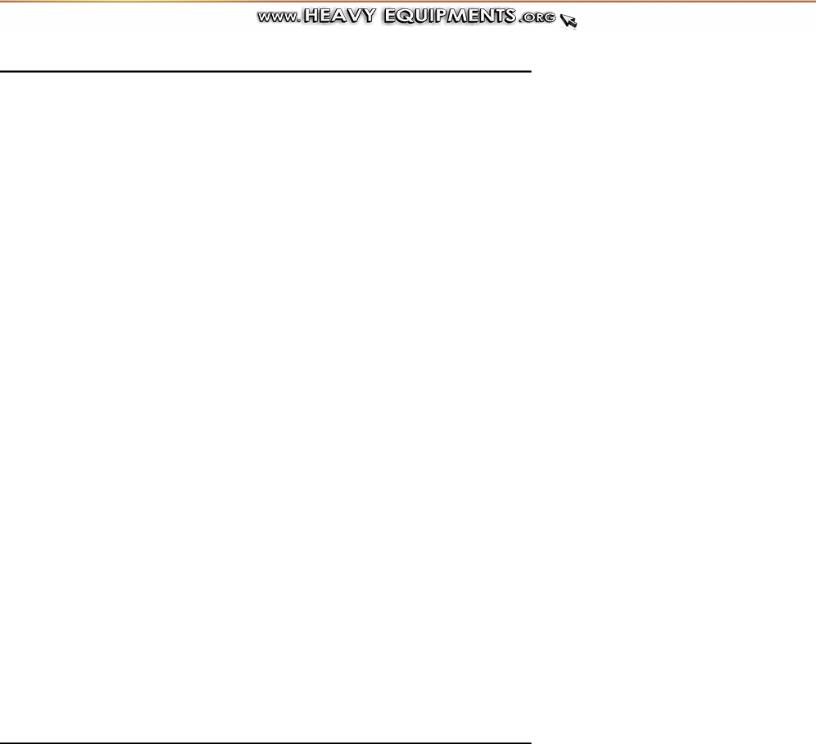
SERIES 50 OPERATOR'S GUIDE |
|
ENGINES WITH FUEL PRO FILTERS ........................................ |
95 |
HOW TO SELECT COOLANT ......................................................... |
96 |
DEFINITIONS .............................................................................. |
96 |
ANTIFREEZE .......................................................................... |
96 |
COOLANT ............................................................................... |
96 |
DROP-OUT ............................................................................. |
96 |
FULLY FORMULATED ANTIFREEZE ..................................... |
96 |
INITIAL–FILL COOLANT ......................................................... |
96 |
OAT .......................................................................................... |
96 |
SCA ......................................................................................... |
96 |
APPROVED COOLANTS ............................................................ |
97 |
EG OR PG & WATER + SCA INHIBITOR ............................... |
98 |
MIXING EG OR PG ANTIFREEZE AND WATER .................... |
98 |
RECYCLED ANTIFREEZE .................................................... |
100 |
EG OR PG & WATER + OAT INHIBITOR ................................ |
100 |
WATER ONLY + SCA OR WATER ONLY + OAT INHIBITOR |
. 101 |
WATER REQUIREMENTS ..................................................... |
102 |
COOLANTS NOT RECOMMENDED ........................................... |
102 |
ALL ANTIFREEZES AND COOLANTS CONTAINING |
|
PHOSPHATE ........................................................................... |
102 |
AUTOMOTIVE TYPE COOLANTS .......................................... |
102 |
METHYL ALCOHOL-BASED ANTIFREEZE ........................... |
103 |
METHOXY PROPANOL-BASED ANTIFREEZE ...................... |
103 |
GLYCOL-BASED COOLANTS FORMULATED FOR HVAC .... |
103 |
ADDITIVES NOT RECOMMENDED ........................................... |
103 |
SOLUBLE OIL ADDITIVES ..................................................... |
103 |
CHROMATE ADDITIVES ........................................................ |
103 |
COOLANT MAINTENANCE ........................................................ |
103 |
COOLANT INHIBITOR TEST INTERVALS ............................ |
103 |
SUPPLEMENTAL ADDITIVES ................................................ |
104 |
COOLANT MAINTENANCE INTERVALS ............................... |
105 |
SCA TEST PROCEDURES ......................................................... |
107 |
NEED-RELEASE FILTERS (NON-OAT SYSTEMS) .................... |
108 |
DROPOUT ................................................................................... |
108 |
EXTENDER ADDITIVE FOR OAT COOLANT ............................. |
109 |
OAT COOLANT DRAIN INTERVAL ......................................... |
109 |
CHRONIC COOLANT SYSTEM PROBLEMS ............................. |
109 |
MAINTENANCE PRODUCTS ..................................................... |
109 |
All information subject to change without notice. (Rev. 01/ 04) |
vii |
6SE550 0401 Copyright © 2004 DETROIT DIESEL CORPORATION |
|

TABLE OF CONTENTS |
|
|
POWER COOL SCAS ............................................................. |
109 |
|
POWER COOL COOLANT FILTER ELEMENTS .................... |
110 |
|
POWER COOL CLEANERS ................................................... |
110 |
|
SUMMARY OF COOLANT RECOMMENDATIONS .................... |
110 |
|
HOW TO DRAIN AND FLUSH THE COOLING SYSTEM ............... |
112 |
|
WHEN TO SERVICE THE DRY TYPE AIR CLEANER .................... |
114 |
|
BASIC TROUBLESHOOTING ............................................................. |
115 |
|
ENGINE STORAGE ............................................................................. |
|
120 |
PREPARING THE ENGINE FOR STORAGE .................................. |
120 |
|
TEMPORARY STORAGE (30 DAYS OR LESS) .......................... |
120 |
|
EXTENDED STORAGE (MORE THAN 30 DAYS) ....................... |
121 |
|
RESTORING ENGINE TO SERVICE .......................................... |
124 |
|
SERIES 50 SERVICE PUBLICATIONS ............................................... |
126 |
|
CUSTOMER ASSISTANCE ................................................................. |
127 |
|
IN U.S. AND CANADA CALL 1–800–445–1980 .............................. |
130 |
|
WORKING WITH DDC SERVICE OUTLETS .................................. |
130 |
|
ON-HIGHWAY VEHICLE ENGINE WARRANTY ................................. |
133 |
|
TERMS OF COVERAGE: ON-HIGHWAY VEHICLE ENGINE |
|
|
APPLICATIONS .............................................................................. |
|
133 |
USES ........................................................................................... |
|
133 |
DEFECTS .................................................................................... |
|
133 |
REPAIRS ..................................................................................... |
|
133 |
WARRANTY PERIOD .................................................................. |
133 |
|
LIKE REPLACEMENT ENGINE .................................................. |
134 |
|
SERVICE SUPPLIES |
................................................................... |
134 |
ENGINE REMOVAL AND REINSTALLATION .............................. |
135 |
|
THIS WARRANTY DOES NOT COVER: ......................................... |
135 |
|
REPAIRS DUE TO ACCIDENTS, MISUSE, STORAGE DAMAGE, |
|
|
NEGLIGENCE OR CERTAIN MODIFICATIONS ......................... |
135 |
|
BRAKING DEVICES .................................................................... |
|
135 |
FUEL INJECTORS AFTER 100,000 MILES/160,000 |
|
|
KILOMETERS .............................................................................. |
|
135 |
MAINTENANCE ........................................................................... |
|
135 |
INCIDENTAL OR CONSEQUENTIAL DAMAGE ......................... |
135 |
|
OTHER LIMITATIONS .................................................................. |
136 |
|
viii |
All information subject to change without notice. (Rev. 01/ 04) |
|
6SE550 |
0401 Copyright © 2004 DETROIT DIESEL CORPORATION |
|

SERIES 50 OPERATOR'S GUIDE |
|
URBAN BUS, MOTOR COACH OR MOTOR HOME ENGINE |
|
WARRANTY ......................................................................................... |
137 |
TERMS OF COVERAGE: URBAN BUS, MOTOR COACH OR |
|
MOTOR HOME ENGINE APPLICATIONS ...................................... |
137 |
USES ........................................................................................... |
137 |
DEFECTS .................................................................................... |
137 |
REPAIRS ..................................................................................... |
137 |
WARRANTY PERIOD .................................................................. |
137 |
SERVICE SUPPLIES ................................................................... |
138 |
LIKE REPLACEMENT ENGINE .................................................. |
138 |
ENGINE REMOVAL AND REINSTALLATION .............................. |
139 |
THIS WARRANTY DOES NOT COVER: ......................................... |
139 |
REPAIRS DUE TO ACCIDENTS, MISUSE, ALTERATION, |
|
STORAGE DAMAGE, NEGLIGENCE OR CERTAIN |
|
MODIFICATIONS ......................................................................... |
139 |
BRAKING DEVICES .................................................................... |
139 |
FUEL INJECTORS AFTER 200,000 MILES/320,000 |
|
KILOMETERS .............................................................................. |
139 |
MAINTENANCE ........................................................................... |
139 |
INCIDENTAL OR CONSEQUENTIAL DAMAGE ......................... |
139 |
OTHER LIMITATIONS .................................................................. |
139 |
CONSTRUCTION/ INDUSTRIAL ENGINE WARRANTY .................... |
141 |
TERMS OF COVERAGE: CONSTRUCTION/INDUSTRIAL ENGINE |
|
APPLICATIONS ............................................................................... |
141 |
USES ........................................................................................... |
141 |
DEFECTS .................................................................................... |
141 |
REPAIRS ..................................................................................... |
141 |
WARRANTY PERIOD .................................................................. |
141 |
SERVICE SUPPLIES ................................................................... |
141 |
ENGINE REMOVAL AND REINSTALLATION – |
|
CONSTRUCTION/INDUSTRIAL APPLICATIONS ....................... |
142 |
MECHANIC'S TRAVEL EXPENSES ........................................... |
142 |
LIKE REPLACEMENT ENGINE .................................................. |
142 |
THIS WARRANTY DOES NOT COVER: ......................................... |
143 |
REPAIRS DUE TO ACCIDENTS, MISUSE, STORAGE DAMAGE, |
|
NEGLIGENCE OR CERTAIN MODIFICATIONS ......................... |
143 |
ENGINE REMOVAL AND REINSTALLATION – AGRICULTURAL |
|
MACHINERY AND STAND-BY PUMP APPLICATIONS .............. |
143 |
All information subject to change without notice. (Rev. 01/ 04) |
ix |
6SE550 0401 Copyright © 2004 DETROIT DIESEL CORPORATION |
|

TABLE OF CONTENTS |
|
|
NON-DDC SUPPLIED/MANUFACTURED COMPONENTS ....... |
143 |
|
MAINTENANCE ........................................................................... |
|
143 |
INCIDENTAL OR CONSEQUENTIAL DAMAGE ......................... |
143 |
|
OTHER LIMITATIONS .................................................................. |
144 |
|
AGRICULTURAL MACHINERY ENGINE WARRANTY ...................... |
145 |
|
TERMS OF COVERAGE: AGRICULTURAL MACHINERY ENGINE |
|
|
APPLICATIONS ............................................................................... |
|
145 |
USES ........................................................................................... |
|
145 |
DEFECTS .................................................................................... |
|
145 |
REPAIRS ..................................................................................... |
|
145 |
WARRANTY PERIOD .................................................................. |
146 |
|
THIS WARRANTY DOES NOT COVER: ......................................... |
146 |
|
REPAIRS DUE TO ACCIDENTS, MISUSE, STORAGE DAMAGE, |
|
|
NEGLIGENCE OR CERTAIN MODIFICATIONS ......................... |
146 |
|
ENGINE REMOVAL AND REINSTALLATION .............................. |
146 |
|
NON-DDC SUPPLIED/MANUFACTURED COMPONENTS ....... |
146 |
|
MAINTENANCE ........................................................................... |
|
146 |
INCIDENTAL OR CONSEQUENTIAL DAMAGE ......................... |
147 |
|
OTHER LIMITATIONS .................................................................. |
147 |
|
PRIME POWER GENERATOR SET ENGINE WARRANTY ............... |
148 |
|
TERMS OF COVERAGE: PRIME POWER GENERATOR SET |
|
|
ENGINE APPLICATIONS ................................................................. |
148 |
|
USES ........................................................................................... |
|
148 |
DEFECTS .................................................................................... |
|
148 |
REPAIRS ..................................................................................... |
|
148 |
WARRANTY PERIOD .................................................................. |
148 |
|
LIKE REPLACEMENT ENGINE .................................................. |
148 |
|
SERVICE SUPPLIES |
................................................................... |
149 |
MECHANIC'S TRAVEL EXPENSES ........................................... |
149 |
|
THIS WARRANTY DOES NOT COVER: ......................................... |
149 |
|
REPAIRS DUE TO ACCIDENTS, MISUSE, STORAGE DAMAGE, |
|
|
NEGLIGENCE OR CERTAIN MODIFICATIONS ......................... |
149 |
|
ENGINE REMOVAL AND REINSTALLATION .............................. |
149 |
|
NON-DDC SUPPLIED/MANUFACTURED COMPONENTS ....... |
150 |
|
MAINTENANCE ........................................................................... |
|
150 |
INCIDENTAL OR CONSEQUENTIAL DAMAGE ......................... |
150 |
|
OTHER LIMITATIONS .................................................................. |
150 |
|
x |
All information subject to change without notice. (Rev. 01/ 04) |
|
6SE550 |
0401 Copyright © 2004 DETROIT DIESEL CORPORATION |
|

SERIES 50 OPERATOR'S GUIDE |
|
STAND-BY GENERATOR SET ENGINE WARRANTY ....................... |
151 |
TERMS OF COVERAGE: STAND-BY GENERATOR SET ENGINE |
|
APPLICATIONS ............................................................................... |
151 |
USES ........................................................................................... |
151 |
DEFECTS .................................................................................... |
151 |
REPAIRS ..................................................................................... |
151 |
WARRANTY PERIOD .................................................................. |
152 |
LIKE REPLACEMENT ENGINE .................................................. |
152 |
SERVICE SUPPLIES ................................................................... |
152 |
MECHANIC'S TRAVEL EXPENSES ........................................... |
152 |
THIS WARRANTY DOES NOT COVER: ......................................... |
152 |
REPAIRS DUE TO ACCIDENTS, MISUSE, STORAGE DAMAGE, |
|
NEGLIGENCE OR CERTAIN MODIFICATIONS ......................... |
152 |
ENGINE REMOVAL AND REINSTALLATION .............................. |
152 |
NON-DDC SUPPLIED/MANUFACTURED COMPONENTS ....... |
152 |
MAINTENANCE ........................................................................... |
153 |
INCIDENTAL OR CONSEQUENTIAL DAMAGE ......................... |
153 |
OTHER LIMITATIONS .................................................................. |
153 |
SPECIFICATIONS ................................................................................ |
154 |
FUEL AND LUBRICATING OIL FILTER REQUIREMENTS ............. |
154 |
OIL PAN ....................................................................................... |
154 |
OIL PAN CAPACITY ................................................................ |
154 |
TOTAL OIL CAPACITY OF THE ENGINE ............................... |
154 |
POWER COOL ENGINE PRODUCTS ............................................. |
155 |
FULLY FORMULATED IEG COOLANT ....................................... |
155 |
LATIN AMERICAN COOLANT ..................................................... |
155 |
2000 SUPPLEMENTAL COOLANT ADDITIVE ........................... |
156 |
3000 SUPPLEMENTAL COOLANT ADDITIVE ........................... |
156 |
3000 SUPPLEMENTAL ADDITIVE COOLANT FILTERS ............ |
157 |
SUPPLEMENTAL ADDITIVE NEED RELEASE FILTERS ........... |
157 |
PLUS EXTENDED LIFE OAT COOLANT .................................... |
158 |
PLUS EXTENDER FOR USE WITH POWER COOL PLUS OAT |
|
COOLANT ................................................................................... |
158 |
PLUS 6000 OAT INHIBITOR FOR WATER-ONLY SYSTEMS ..... |
159 |
COOLING SYSTEM CLEANERS ................................................ |
159 |
COOLANT TESTING AND ANALYSIS PRODUCTS ................... |
160 |
All information subject to change without notice. (Rev. 01/ 04) |
xi |
6SE550 0401 Copyright © 2004 DETROIT DIESEL CORPORATION

TABLE OF CONTENTS
xii |
All information subject to change without notice. (Rev. 01/ 04) |
6SE550 |
0401 Copyright © 2004 DETROIT DIESEL CORPORATION |

SERIES 50 OPERATOR'S GUIDE
INTRODUCTION
This guide is intended for use by the operator of a Detroit Diesel Series 50® engine used in the following applications:
On-Highway Vehicles
Construction/Industrial
Agricultural Machinery
Generator Drive Engines
Operators of Series 50 engines used in prime power or stand-by generator set applications should also refer
to the Detroit Diesel Generator Set Operator's Guide, 6SE513. Guides are available from authorized Detroit Diesel distributors.
NON-GENUINE AND REBUILT COMPONENT QUALITY ALERT
In recent years, electronic engine controls have been instrumental in aiding engine manufacturers in meeting the stringent emission requirements of the U.S. Environmental Protection Agency (U.S. EPA) and the California Air Resources Board (CARB) and also in meeting the ever-increasing
performance demands of the customer.
Maintenance procedures are to be followed in order to continue satisfactory performance and
durability and to ensure coverage of the engine under the manufacturer's warranty. Many of these maintenance procedures also ensure that the engine continues to comply with applicable emissions standards. The U.S. EPA specifically defines an engine's “useful emission life” — currently established as 290,000 miles (464,000 kilometers) for on-highway engines. Proper maintenance procedures, using specific components engineered to comply with emissions regulations, may be performed by an authorized Detroit Diesel distributor or dealer, an independent outlet or the operator or owner. The owner is responsible for determining the suitability of components to maintain emissions compliance during the engine's useful emission life.
Electronic controls and components have significantly increased in sophistication, but the fundamental objective remains the same — precise timing and delivery of fuel. The very heart of the Detroit Diesel electronic controls is the electronic unit injector (EUI). The proper functioning of the EUI is absolutely paramount if the benefits of electronic controls are to be realized. Detroit Diesel Corporation has built over 650,000 engines with electronic unit injectors — more than anyone else in the business.
All information subject to change without notice. (Rev. 01/ 04) |
1 |
6SE550 0401 Copyright © 2004 DETROIT DIESEL CORPORATION

INTRODUCTION
Detroit Diesel cautions that the indiscriminate rebuilding of precision components, without the benefit of specifications, specialized equipment, and knowledge of the electronic operating system, will jeopardize performance or lead to more serious problems, and can take the engine outside of compliance with U.S. EPA or CARB emissions standards.
There are other components in an engine, such as turbocharger, camshaft, piston, etc., which are specifically designed and
manufactured to exacting standards for emissions compliance. It is important that these components, if replaced, modified or substituted, can be verified to ensure that the engine remains in compliance with emissions standards. The use of inadequately engineered, manufactured or tested components in repair or rebuild of the engine may be in violation of the federal Clean Air Act and applicable U.S. EPA or CARB regulations.
Furthermore, modern engines exhibit operating parameters which require the use of proper fluids, such as fuel, coolant and lubricating oil, to maintain long engine life. The use of fluids that do not meet Detroit Diesel Corporation specifications may result in early wear out or engine failure.
2 |
All information subject to change without notice. (Rev. 01/ 04) |
6SE550 |
0401 Copyright © 2004 DETROIT DIESEL CORPORATION |
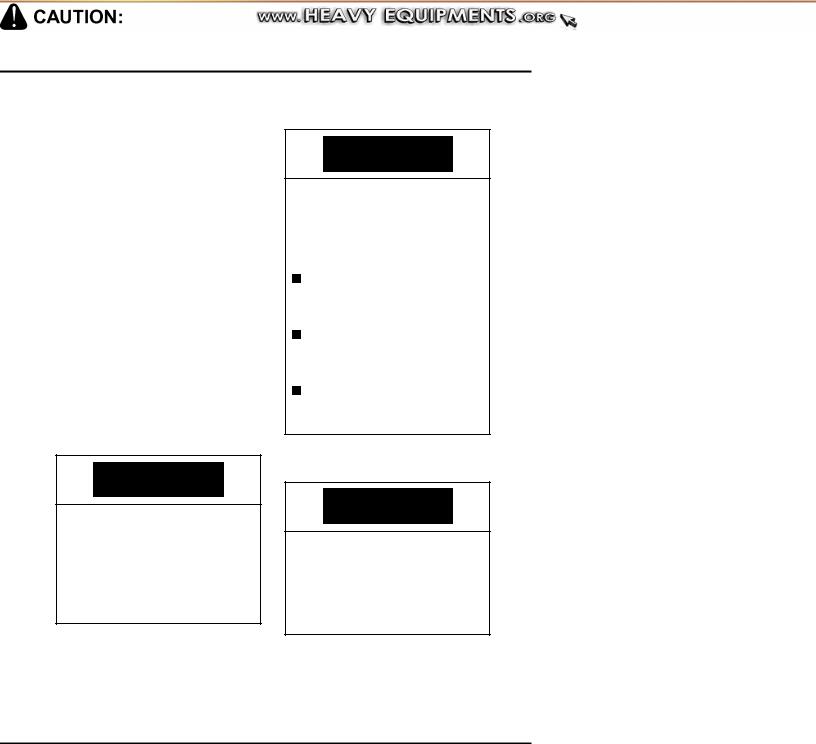
SERIES 50 OPERATOR'S GUIDE
CAUTION SUMMARY
The following cautions must be observed by the operator of the vehicle or equipment in which this engine is installed and/or by those performing basic engine preventive maintenance. Failure to read and heed these cautions and exercise reasonable care for personal safety and the safety of others when operating the vehicle/equipment or performing basic engine preventive maintenance may result in personal injury and engine and/or vehicle/equipment damage.
Engine Operation
Observe the following cautions when operating the engine.
To avoid injury from loss of vehicle/vessel control, the operator of a DDEC equipped engine must not attempt to use or read the Diagnostic Data Reader when the vehicle/vessel is moving.
Diesel engine exhaust and some of its constituents are known to the State of California to cause cancer, birth defects, and other reproductive harm.
Always start and operate an engine in a well ventilated area.
If operating an engine in an enclosed area, vent the exhaust to the outside.
Do not modify or tamper with the exhaust system or emission control system.
To avoid injury from engine shutdown in an unsafe situation, ensure the operator knows how to override the stop engine condition on a DDEC-equipped unit.
All information subject to change without notice. (Rev. 01/ 04) |
3 |
6SE550 0401 Copyright © 2004 DETROIT DIESEL CORPORATION
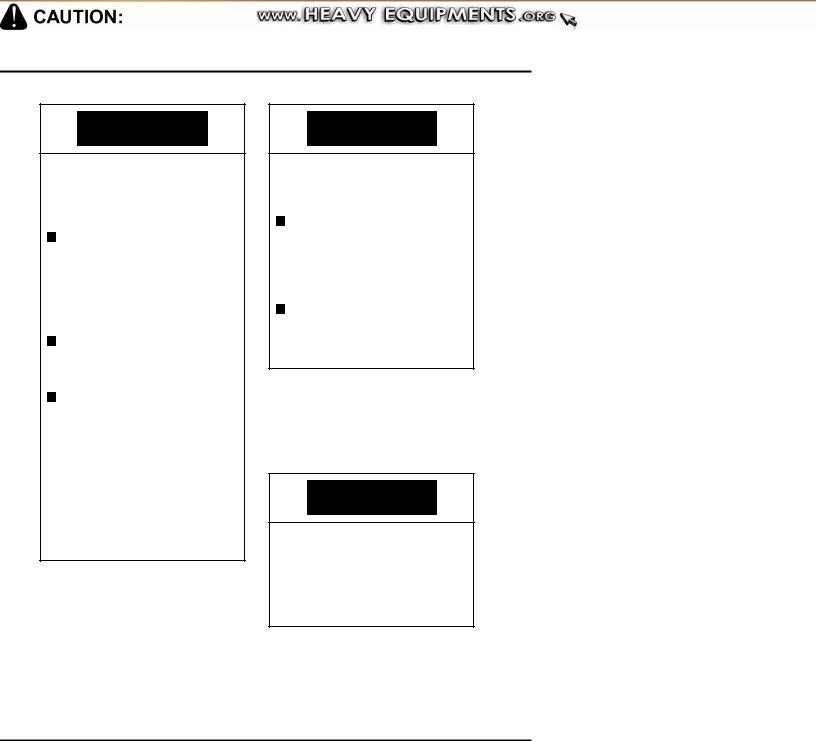
CAUTION SUMMARY
To avoid injury from loss of vehicle control, do not activate the Engine Brake system under the following conditions:
On wet or slippery pavement, unless the vehicle is equipped with ABS (anti-lock braking system) and you have had prior experience driving under these conditions.
When driving without a trailer (bobtailing) or pulling and empty trailer.
If the tractor drive wheels begin to lock or there is fishtail motion after the Engine Brake is activated.
Deactivate the brake system immediately, if this occurs.
Failure to observe these precautions may result in loss of vehicle control and/or personal injury.
To avoid injury from the loss of vehicle control, do not use cruise control under these conditions:
When it is not possible to keep the vehicle at a constant speed (on winding roads, in heavy traffic, in traffic that varies in speed, etc.).
On slippery roads (wet pavement, ice-or
snow-covered roads, loose gravel, etc.).
Preventive Maintenance
Observe the following cautions when performing preventative maintenance.
To avoid injury when working near or on an operating engine, remove loose items of clothing, jewelry, tie back or contain long hair that could be caught in any moving part causing injury.
4 |
All information subject to change without notice. (Rev. 01/ 04) |
6SE550 |
0401 Copyright © 2004 DETROIT DIESEL CORPORATION |

SERIES 50 OPERATOR'S GUIDE
To avoid injury when working on or near an operating engine, wear protective clothing,
eye protection, and hearing protection.
To avoid injury from hot oil, do not operate the engine with the rocker cover(s) removed.
To avoid injury from fire, contain and eliminate leaks of flammable fluids as they occur. Failure to eliminate leaks could result in fire.
To avoid injury from contact with the contaminants in used engine oil, wear protective gloves and apron.
To avoid injury from slipping and falling, immediately clean up any spilled liquids.
To avoid injury from the expulsion of hot coolant, never remove the cooling system pressure cap while the engine is at operating temperature. Remove the cap slowly to relieve pressure. Wear adequate protective clothing (face shield or safety goggles, rubber gloves, apron, and boots).
To avoid injury from hot surfaces, allow engine to cool before removing any component. Wear protective gloves.
All information subject to change without notice. (Rev. 01/ 04) |
5 |
6SE550 0401 Copyright © 2004 DETROIT DIESEL CORPORATION

CAUTION SUMMARY
To avoid injury, use care when working around moving belts and rotating parts on the engine.
To avoid injury from fire caused by heated lubricating-oil vapors:
Keep those people who are not directly involved in servicing away from the engine.
Stop the engine immediately if an oil leak is detected.
Do not allow open flames or smoke when working on an operating engine.
Wear adequate protective clothing (face shield, insulated gloves, apron, etc.) to avoid burns.
To prevent a buildup of potentially volatile vapors, keep the engine area well ventilated during operation.
Lubricating oil is relatively harmless at ambient temperatures.
To avoid injury from rotating belts and fans, do not remove and discard safety guards.
To avoid injury from contact with rotating parts when an engine is operating with the air inlet piping removed, install an air inlet screen shield over the turbocharger air inlet. The shield prevents contact with rotating parts.
To avoid injury when using caustic cleaning agents, follow the chemical manufacturers usage, disposal, and safety instructions.
6 |
All information subject to change without notice. (Rev. 01/ 04) |
6SE550 |
0401 Copyright © 2004 DETROIT DIESEL CORPORATION |

SERIES 50 OPERATOR'S GUIDE
Electrical System
Observe the following cautions when jump starting an engine, charging
a battery, or working with the vehicle/application electrical system.
To avoid injury from accidental engine startup while servicing the engine, disconnect/disable the starting system.
To avoid injury from electrical shock, do not touch battery terminals, alternator terminals, or wiring cables while the engine is operating.
To avoid injury from battery explosion or contact with battery acid, work in a well-ventilated area, wear protective clothing, and avoid sparks or flames near the battery. Always establish correct polarity before connecting cables to the battery or battery circuit. If you come in contact with battery acid:
Flush your skin with water.
Apply baking soda or lime to help neutralize the acid.
Flush your eyes with water.
Get medical attention immediately.
All information subject to change without notice. (Rev. 01/ 04) |
7 |
6SE550 0401 Copyright © 2004 DETROIT DIESEL CORPORATION
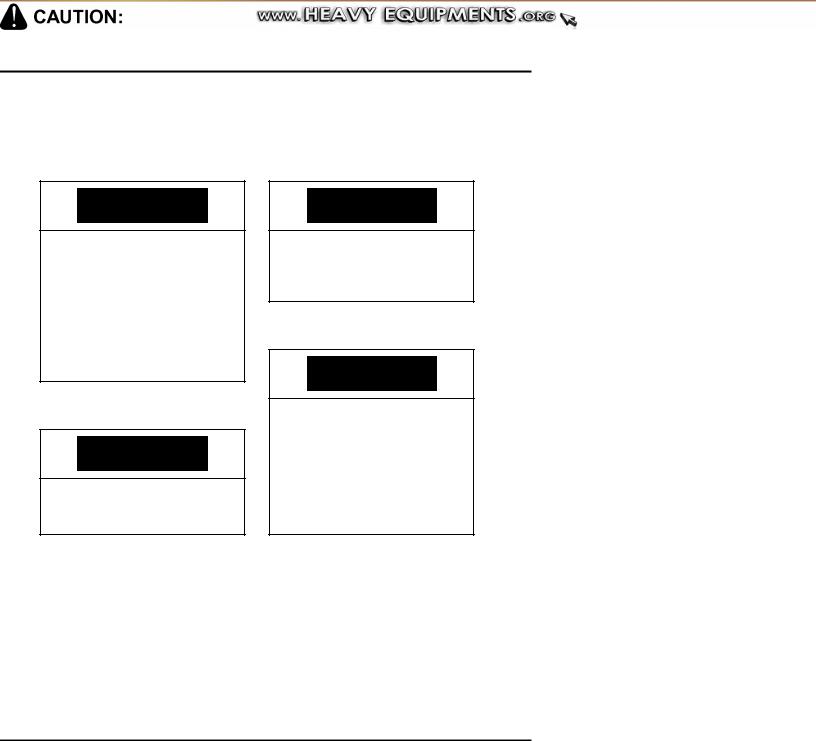
CAUTION SUMMARY
Cooling System
Observe the following cautions when servicing the cooling system.
Air Intake System
Observe the following cautions when working on the air intake system.
To avoid injury from the expulsion of hot coolant, never remove the cooling system pressure cap while the engine is at operating temperature. Remove the cap slowly to relieve pressure. Wear adequate protective clothing (face shield or safety goggles, rubber gloves, apron, and boots).
To avoid injury from slipping and falling, immediately clean up any spilled liquids.
To avoid injury from hot surfaces, allow engine to cool before removing any component. Wear protective gloves.
To avoid injury from contact with rotating parts when an engine is operating with the air inlet piping removed, install an air inlet screen shield over the turbocharger air inlet. The shield prevents contact with rotating parts.
8 |
All information subject to change without notice. (Rev. 01/ 04) |
6SE550 |
0401 Copyright © 2004 DETROIT DIESEL CORPORATION |

SERIES 50 OPERATOR'S GUIDE
Fuel System
Observe the following cautions when fueling the vehicle or working with the fuel system.
To avoid injury from fire, keep all potential ignition sources away from diesel fuel, open flames, sparks, and electrical resistance heating elements. Do not smoke when refueling.
To avoid injury from fire, contain and eliminate leaks of flammable fluids as they occur. Failure to eliminate leaks could result in fire.
To avoid injury from fire caused by heated diesel-fuel vapors:
Keep those people who are not directly involved in servicing away from the engine.
Stop the engine immediately if a fuel leak is detected.
Do not allow open flames or smoke when working on an operating engine.
Wear adequate protective clothing (face shield, insulated gloves and apron, etc.).
To prevent a buildup of potentially volatile vapors, keep the engine area well ventilated during operation.
Diesel fuel is relatively harmless at ambient temperatures.
To avoid increased risk of a fuel fire, do not mix gasoline and diesel fuel.
All information subject to change without notice. (Rev. 01/ 04) |
9 |
6SE550 0401 Copyright © 2004 DETROIT DIESEL CORPORATION

CAUTION SUMMARY
Starting Aids
Observe the following cautions when using starting aids.
To avoid injury from flames, explosion, and toxicants when using ether, the following precautions must be taken:
Always wear goggles when testing.
If fluid enters the eyes or if fumes irritate the eyes, wash eyes with large quantities of clean water for 15 minutes. A physician, preferably an eye specialist, should be contacted.
Contents of cylinder are under pressure. Store cylinders in a cool dry area. Do not incinerate, puncture or attempt to remove cores from cylinders.
To avoid injury from flames, explosion, and toxicants when using ether, the following precautions must be taken:
Do not smoke when servicing ether system.
Work in well-ventilated area.
Do not work near open flames, pilot flames (gas or oil heaters), or sparks.
Do not weld or carry an open flame near the ether system if you smell ether or otherwise suspect a leak.
10 |
All information subject to change without notice. (Rev. 01/ 04) |
6SE550 |
0401 Copyright © 2004 DETROIT DIESEL CORPORATION |

SERIES 50 OPERATOR'S GUIDE
Compressed Air
Observe the following cautions when using compressed air.
To avoid injury from flying debris when using compressed air, wear adequate eye protection (face shield or safety goggles) and do not exceed 40 psi (276 kPa) air pressure.
Lubricating Oil and Filters
Observe the following cautions when replacing the engine lubricating oil and filters.
To avoid injury from slipping and falling, immediately clean up any spilled liquids.
To avoid injury from fire caused by heated lubricating-oil vapors:
Keep those people who are not directly involved in servicing away from the engine.
Stop the engine immediately if an oil leak is detected.
Do not allow open flames or smoke when working on an operating engine.
Wear adequate protective clothing (face shield, insulated gloves, apron, etc.) to avoid burns.
To prevent a buildup of potentially volatile vapors, keep the engine area well ventilated during operation.
Lubricating oil is relatively harmless at ambient temperatures.
All information subject to change without notice. (Rev. 01/ 04) |
11 |
6SE550 0401 Copyright © 2004 DETROIT DIESEL CORPORATION
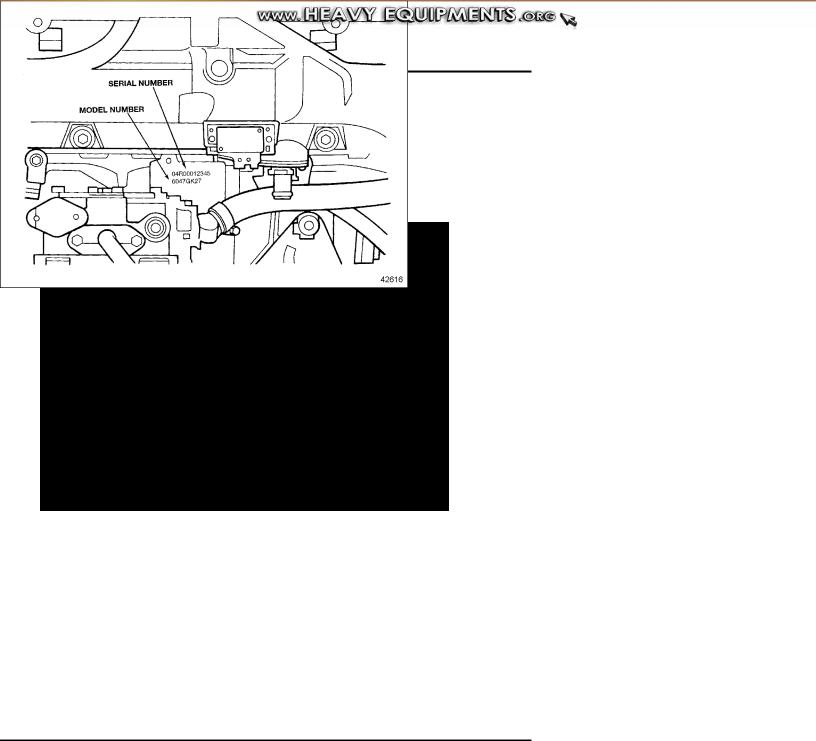
ENGINE MODEL AND SERIAL NUMBER DESIGNATION
ENGINE MODEL AND SERIAL NUMBER DESIGNATION
The engine serial number and model number are laser etched on the cylinder block on the left side just below the intake manifold and above
the cast-in Detroit Diesel logo (as viewed from the flywheel end). See Figure 1
Figure 1 Location of Engine Serial and Model Numbers
12 |
All information subject to change without notice. (Rev. 01/ 04) |
6SE550 |
0401 Copyright © 2004 DETROIT DIESEL CORPORATION |
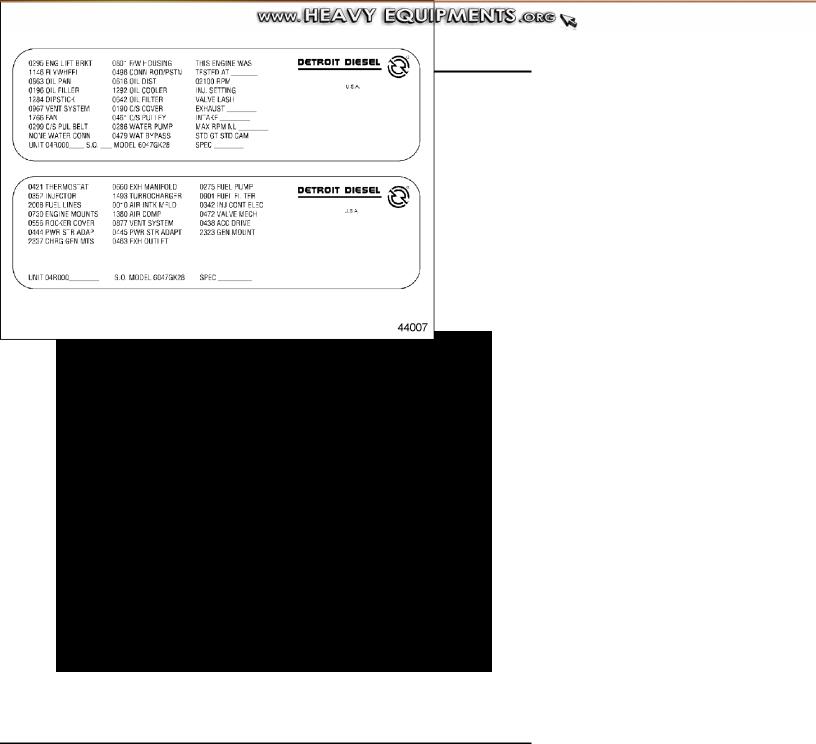
SERIES 50 OPERATOR'S GUIDE
Option Labels
Computerized engine option labels are attached to the valve rocker cover. These labels contain the engine serial number and model number and, in addition, list any optional equipment used on the engine. Labels also include required tune-up information (injection timing, valve lash, maximum no-load rpm, etc.).
With any order for parts, the engine model and serial number must be
given. If a type number is shown on the option label covering the equipment required, this number should also be included on the parts order. See Figure 2.
Transmissions and power take-offs generally carry their own name plates. The model and serial number information on these plates is useful when ordering parts for these assemblies.
Figure 2 Typical Option Labels
All information subject to change without notice. (Rev. 01/ 04) |
13 |
6SE550 0401 Copyright © 2004 DETROIT DIESEL CORPORATION

ENGINE MODEL AND SERIAL NUMBER DESIGNATION
Certification Labels
If required, a certification label is attached to the valve rocker cover. This label certifies that the engine conforms to federal and certain state
emissions regulations for its particular application. It also gives the operating conditions under which certification was made. See Figure 3.
Figure 3 Typical Engine Certification Labels
14 |
All information subject to change without notice. (Rev. 01/ 04) |
6SE550 |
0401 Copyright © 2004 DETROIT DIESEL CORPORATION |
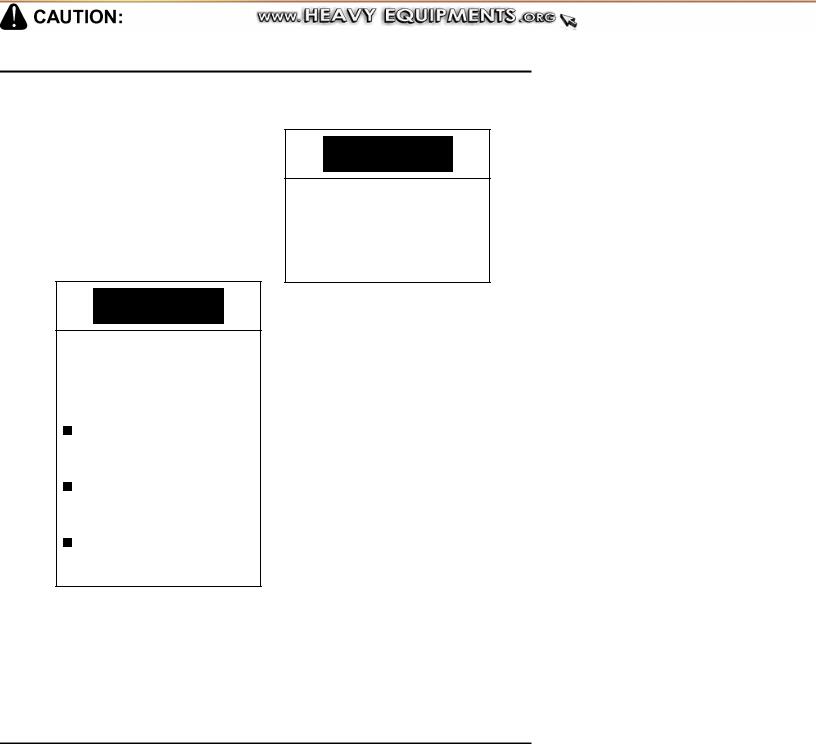
SERIES 50 OPERATOR'S GUIDE
OPERATING INSTRUCTIONS FOR A FIRST TIME START
When preparing to start a new or newly overhauled engine which has been in storage, perform all of the operations listed below. Failure to follow these instructions may result in serious engine damage. Before a routine start, see the “Daily” checks for your engine in the MAINTENANCE section.
Diesel engine exhaust and some of its constituents are known to the State of California to cause cancer, birth defects, and other reproductive harm.
Always start and operate an engine in a well ventilated area.
If operating an engine in an enclosed area, vent the exhaust to the outside.
Do not modify or tamper with the exhaust system or emission control system.
To avoid injury when working near or on an operating engine, remove loose items of clothing, jewelry, tie back or contain long hair that could be caught in any moving part causing injury.
System Checks
Perform the following system checks before starting for the first time.
Cooling System Checks
Check the cooling system as follows:
1.Make sure all drain cocks in the cooling system are installed (drain cocks are often removed for shipping) and are closed tightly.
2.Remove the radiator pressure control cap and fill with genuine Detroit Diesel Power Cool antifreeze or an equivalent quality ethylene glycol or propylene glycol-base antifreeze solution in the required concentration.
In extremely hot environments, properly inhibited water may be used in the summer. Keep the coolant level at the bottom of the filler neck to allow for
All information subject to change without notice. (Rev. 01/ 04) |
15 |
6SE550 0401 Copyright © 2004 DETROIT DIESEL CORPORATION

OPERATING INSTRUCTIONS FOR A FIRST TIME START
expansion of the coolant. For more detailed recommendations, refer to the How to Select Coolant section in this guide.
3.Entrapped air must be purged after filling the cooling system. To do this, allow the engine to warm up with the pressure cap removed. With the transmission in neutral, increase engine speed above 1,000 rpm and add coolant to the radiator as required.
4.Check to make sure the front of the radiator and air-to-air charge cooler (if equipped) are unblocked and free of debris.
Lubrication System Checks
The lubricating oil film on the rotating parts and bearings of a new or newly overhauled engine, or one which has been in storage for six months or more, may be insufficient when the engine is started for the first time.
NOTICE:
Insufficient lubrication at startup can cause serious damage to engine components.
To insure an immediate flow of oil to all bearing surfaces at initial
engine startup, the engine lubrication system should be charged with a commercially available pressure
pre-lubricator. If this is impractical, rocker covers should be removed and clean lubricating oil should be poured over the rocker arms. The oil should be the same weight and viscosity
as that used in the crankcase. After pre-lubricating, add additional oil to bring the level to the proper mark on the dipstick. See Figure 4.
Figure 4 Check Lube Oil Level
Before Starting
For lubricant recommendation,
refer to the How to Select Lubricating Oil section in this guide.
Extended Storage — An engine in storage for an extended period of time (over winter, for example) may accumulate water in the oil pan through normal condensation of moisture (always present in the air) on the cold, internal surfaces of the engine. Lube oil diluted by water cannot provide adequate bearing protection at engine startup. For this reason, Detroit Diesel recommends
16 |
All information subject to change without notice. (Rev. 01/ 04) |
6SE550 |
0401 Copyright © 2004 DETROIT DIESEL CORPORATION |
